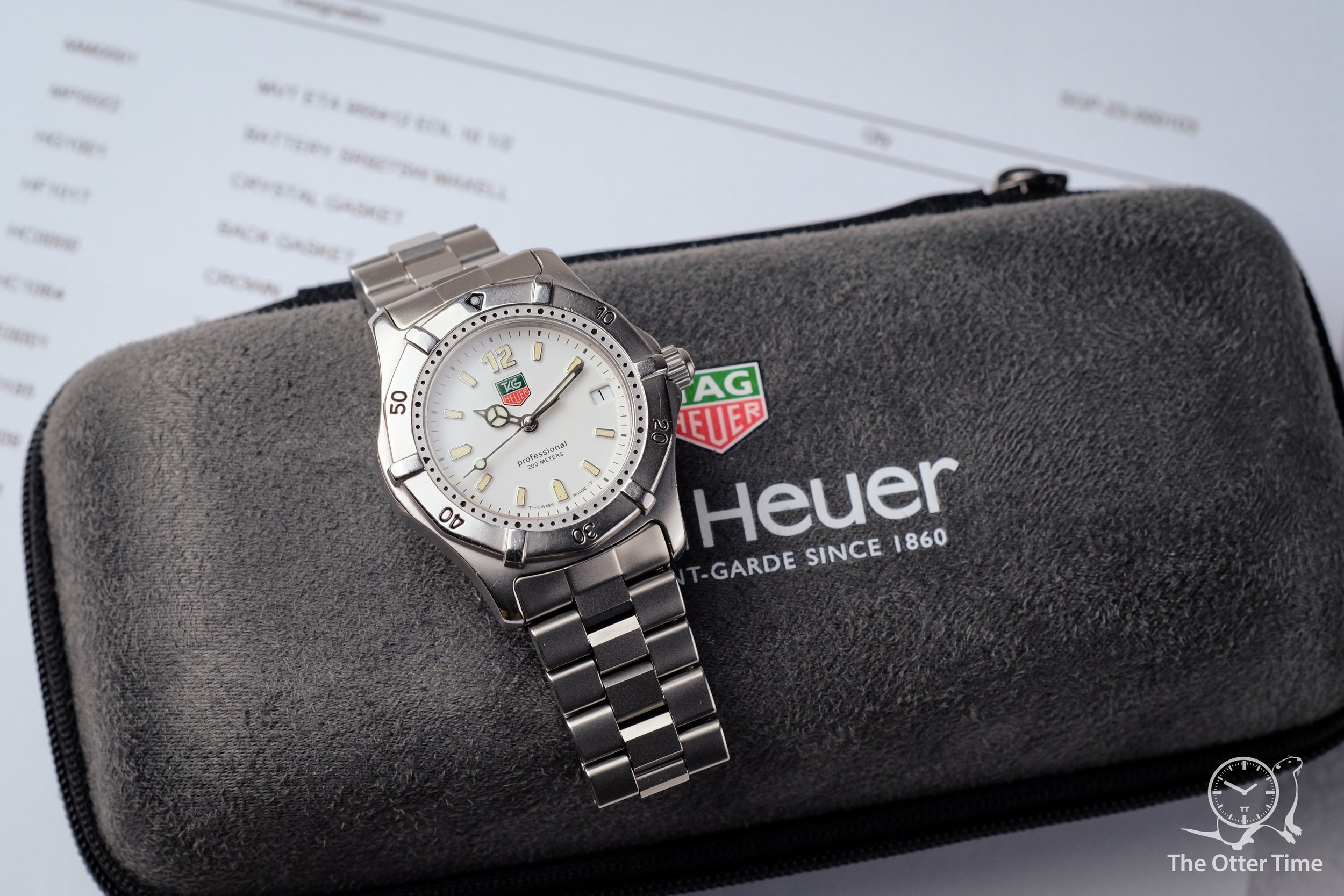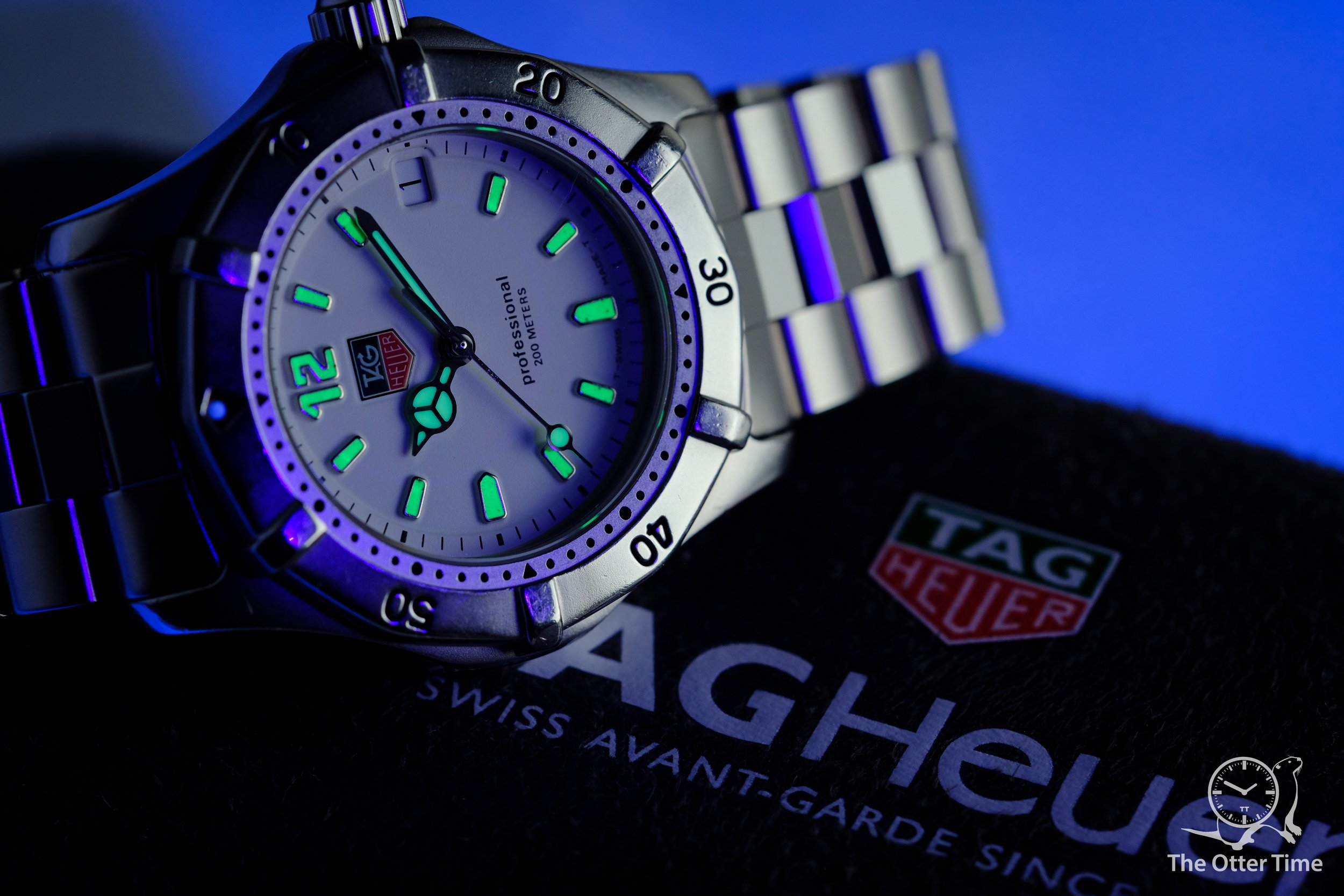Restoring the Watch I Grew Up With: Tag Heuer 2000 Quartz
Reading the headline, one must think that I am crazy. Restoring a nearly 3-decade-old quartz watch? Worse, a Tag Heuer? If there’s a survey of controversial terms in the watch world, I’m sure “quartz” and “Tag Heuer” would appear on the top 10 list. Nevertheless, it is the watch I grew up with and I was determined to make it run again. Here’s my journey.
My dad bought the watch in the 90s and for a long time it was the only watch he used. It would always be on the dining table where I would pick it up and play with its ratcheting bezel and cup up the dial to see the lume effect. The unidirectional bezel, date window, lume, quartz movement, and metal bracelet with a tri-fold clasp defined what an adult watch is for me. Since young, I’ve always wanted to get such a watch myself, preferably a Tag Heuer too.
Heuer, as they were known before TAG Group's acquisition, properly started their dive watch line in 1979, 25 years after the introduction of the Rolex Submariner and Blancpain Fifty Fathoms. The story is that Jack Heuer overheard complaints from diving equipment representatives at a trade show about the lack of reliable private-label dive watches. This gave him the idea of well-built, Rolex-esque quartz watches for the market. The idea led to the launch of the Ref. 844 automatic and Ref. 8440 quartz models in 1979. Initially manufactured by Monnin in France, the models were an instant success which encouraged Heuer to expand the catalog of dive watches significantly. The collection was formally named the 1000 Series in 1984 which Heuer credited as a key factor in their survival through the quartz crisis.
The 2000 series introduced in 1982 was Heuer’s modern take on dive watch design, unconstrained by the 1950s design of the Submariner and the Fifty Fathoms. While initially offered in 2 bezel styles, the new style with prominent rectangular lugs for better grip became synonymous with the series. The design lives on in the modern-day Aquaracer while the traditional flat bezel style was only used in early models although they’re now being revived in the latest Aquaracers. The example I now own with reference WK1211 is likely from the 2nd generation of the series which features metal surrounds on hour markers and angled bezels for a more premium, modern look.
Measuring 33.5 mm in diameter, 40 mm lug-to-lug, and 9.5 mm thick, the WK1211 is considered mid-size by Tag Heuer. While some old catalogs suggested that the WK1211 came with a silver dial, I can say for sure that it is white. On it, you’ll find a recessed, colorful Tag Heuer logo, at the 12 o’clock position and the printed words “professional 200 METERS” at the 6 o’clock position. The “Swiss Made” words flank the 6 o’clock hour marker which themselves are bordered on both ends by the letter T, indicating the use of tritium lume. A simple, unbordered date window can be found at the 3 o’clock position. Surrounding the dial are metal-rimmed, lume-filled baguette hour markers with the 12 o’clock marker replaced with the actual number done in a similar fashion. All these are contained within a stainless steel case topped with a sapphire crystal. The most unique aspect of the watch is no doubt its unidirectional, ratcheting bezel. Made of stainless steel, the bezel has a lume pip at 12, rectangular lugs at the 5-minute positions, and embossed, ink-filled numbers for the 10-minute positions. Typical of watches of the era, the tri-link bracelet with tri-fold safety clasp has folded end links and clasp, unlike their modern descendants. Although it may make it feel “cheaper”, the folded end links, finer links, and overall smaller size makes it much more comfortable to wear than the current Aquaracer models.
After over 2 decades of heavy use, the watch stopped and grime jammed the 3rd-party, oversized replacement crown. My favorite part of the watch, the bezel can no longer rotate as well. While my dad thought it was time to retire the watch, I was keen to restore it so I sent it to Tag Heuer’s service center for evaluation in September of 2019. Given the age and state of the watch, they recommended replacement of the case, crown, dial, hands, bracelet, bezel spring, and a complete overhaul of the movement at a total cost of S$1,448.90 with tax. As only the bezel and movement would be kept and the price is close to a brand new Aquaracer back then, the service center recommended against restoration which I concurred with. So the watch was returned to me, free of charge.
Fast forward 3 years, I bought my parents a pair of Aquaracer for their wedding anniversary and traded them for the old watch. It was a laughable trade but the old watch carried sentimental value. This time, I was determined to restore it to a functional state. As I intended to keep the watch’s original appearance, I brought the old quotation with me to Tag Heuer’s Wisma Atria boutique (they no longer allow walk-ins at the service center) and told them that I would like to keep as much of the exterior parts as possible. They took the watch in and about 2 weeks later sent me a quotation that recommended doing a complete service and replacement of the bracelet. The complete service included the replacement of the movement, battery, gaskets, crown, and hands. They would also retest the water resistance and provide a 2-year warranty for the replaced parts. The bracelet replacement was recommended as the old one has a 3rd-party end-link that created gaps and it was at risk of breaking after decades of use. 3 weeks of back-and-forth emails and a phone call later, I agreed to the scope and paid. It took 2 weeks for the parts to arrive and another week for the actual repair work.
After a total of two and a half months, I collected the restored watch back from the boutique. At the collection, they also showed me all the replaced parts before they sent them for destruction. And no, we are not allowed to keep the old parts. The wallet damage was S$373.93 for the complete service and S$206 for the bracelet excluding GST. Comparing the quotation from 3 years ago, the cost actually came down and it’s a fraction of what a new Aquaracer costs today after multiple price hikes in the past 3 years. They even repaired the bezel lume pip for me free of charge although, for whatever reason, they used a blue lume ball instead of the original green. Unfortunately, the original hands were too oxidized to be kept despite my request to keep them if possible so there is a noticeable difference in the lume. The date wheel also looks whiter since the movement has been replaced.
Overall, I would say I’m quite pleased with the service. Tag Heuer was able to provide original parts for a nearly 30-year-old watch and was able to tailor the service according to my request. While S$400 is probably as much as the watch’s purchase price in the 90s, it did come with a brand new movement, various replacement parts, water resistance test, and a 2-year warranty. I was also very impressed by their call agent who retrieved the watch and was knowledgeable enough to make recommendations on the spot over the phone. I’m happy to say that after over 3 years of restoration attempts, I finally own a Tag Heuer. Not just any Tag Heuer but the one that I grew up with.
Specifications
Model: Tag Heuer 2000 Series, Ref. WK1211
Movement: ETA 955.xxx (ESA 555.xxx) quartz family, ETA 955.412 used in service movement replacement
Size: 33.5 mm diameter, 40 mm lug-to-lug, 18 mm lug width, 9.5 mm thickness
Case Material: Stainless Steel
Crystal: Flat sapphire
Complications: Unidirectional bezel, date
Water Resistance: 20 bar/200 m
Bracelet: Tri-link bracelet with tri-fold safety clasp
Gallery






